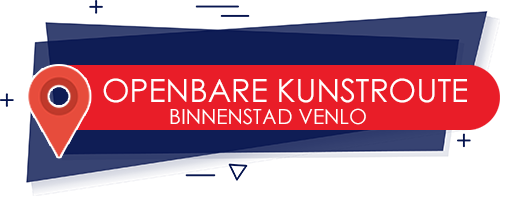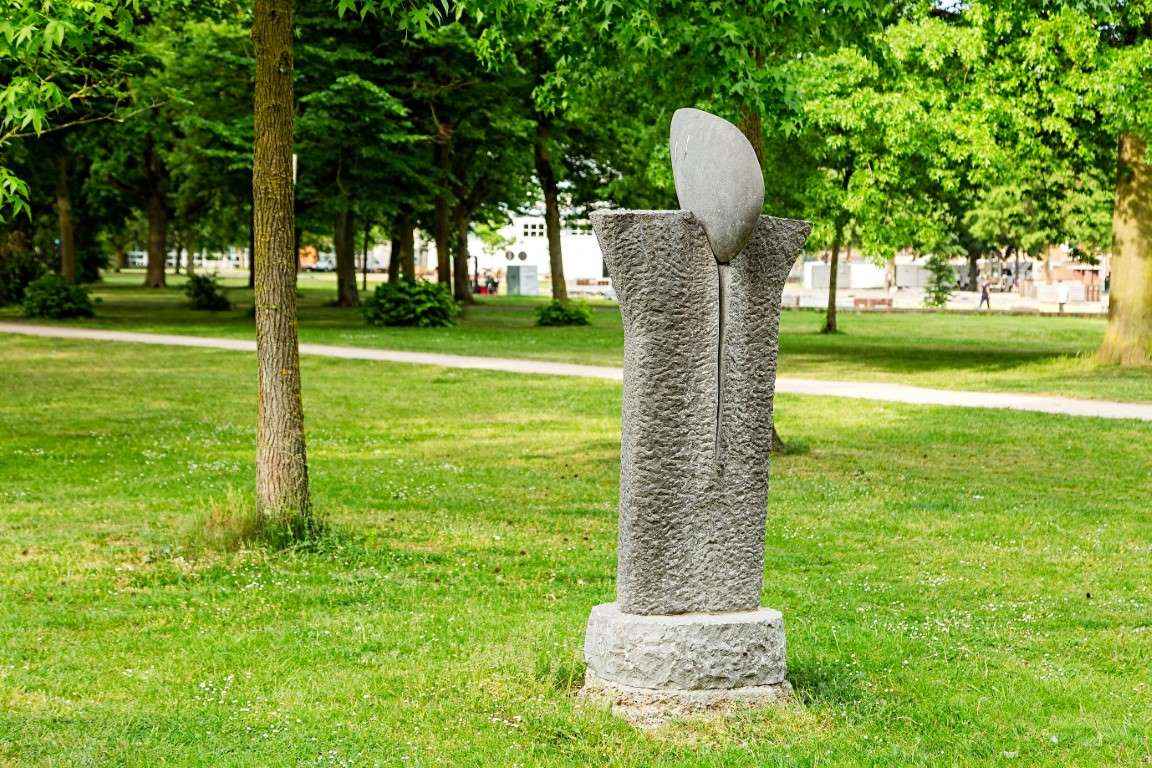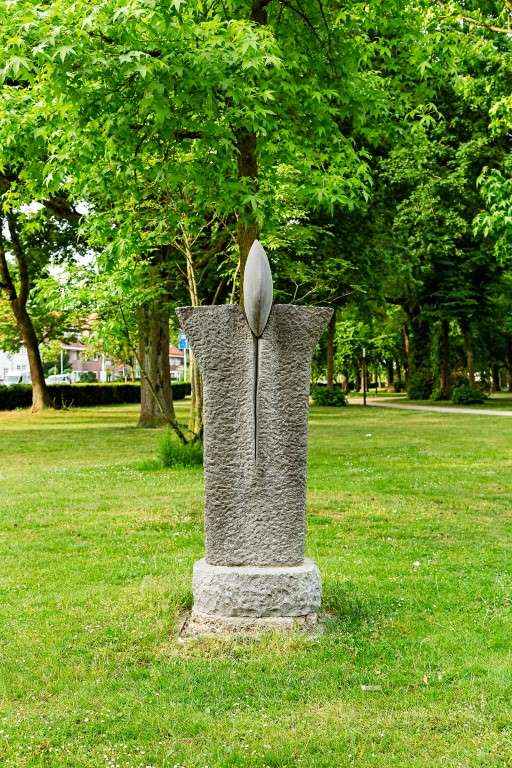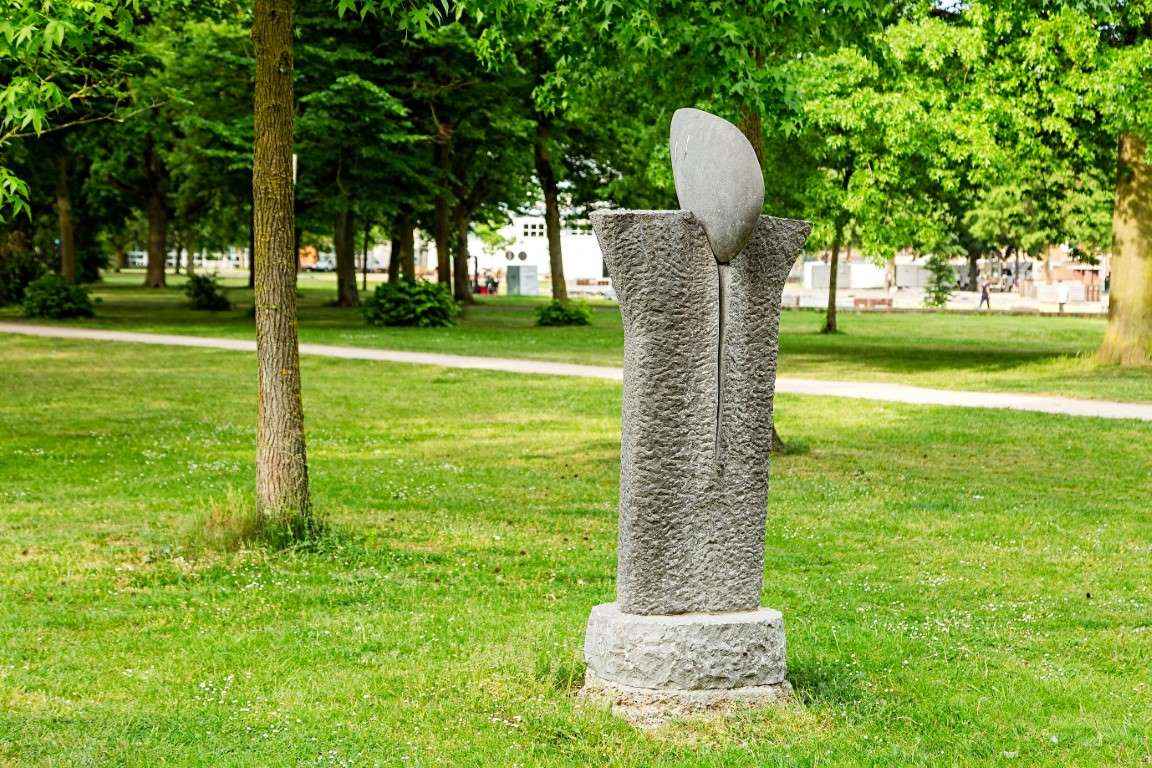Bijlslag
Juliana Park
Bijlslag – Cor van Noorden
Cor van Noorden’s work Bijlslag in Julianapark in Venlo has the suffix ‘wounded soul’, perhaps to distinguish it from a sculpture also made by him. That sculpture also called Bijlslag can be found in Eijsden.
The Venlo version has found his place in the park since 1978. With Bijlslag, Van Noorden depicts the destruction, the splitting of the insulting violence inflicted on humanity.
The artist: Cor van Noorden
Cor van Noorden (1927-2014) was a stone sculptor who preferred to work with ‘petit granit de l’Ourthe’, a Belgian limestone. The Maastricht-born artist’s works include reliefs, small sculptures, funerary monuments and freestanding sculptures. He received his first monumental commission in the mid-1960s: a memorial for the biologist Jac. P. Thijsse, which took the form of a bird feeder.
Before he started working as an artist, he studied at the Middelbare Kunstnijverheidsschool in Maastricht (1947-1950), at the Koninklijke Academie voor Schone Kunsten in Antwerp (1950-1951) and at the Jan van Eyck Academie in Maastricht (1951-1958).
His work has been part of several exhibitions, such as in 1982-1983 when he had a duo exhibition with Piet Teraa in the Venlo Museum van Bommel van Dam.
The Juliana Park
A group of men playing petanque, young people playing, people lazing in the shade of a tree or sitting on a bench reading a book. As soon as the weather gets good, Julianapark is a place of meeting. For example, during the festivals that take place there in the summer months, such as the culinary event Lekker Venlo, dance event Stereo Sunday and the now famous Zomerparkfeest. The spot we now know as Julianapark, adjacent to Keulsepoort, is the spot where one of the four city gates in Venlo’s fortifications once stood.
Just outside the Keulsepoort, until the nineteenth century, was a location called the Elysian Fields. From 1875, it was the location of the shunting yard of the Köln-Mindener Bahn, an international railway connection between Hamburg and Paris with a stop in Venlo. Therefore, in that period, the road west of the park was called Hamburgersingel. After the war, it was changed to Deken van Oppensingel, after Dean Jules van Oppen, who died during the war as a resistance fighter in Camp Vught.
The people of Venlo also called the road Ponywaeg. There could be two explanations for this. In line of the road there used to be the Pope factory. The young ladies who worked there were the first in Venlo to have their hair cut in a Pony style. Another explanation could be that the hussars – stationed in Venlo between 1816 and 1913 – took their horses (Ponies) out on the Hamburgersingel.
In 1971, the Van Bommel van Dam Museum opened its doors in Julianapark, nowadays located in the former post office at the Keulsepoort. Since 2000, the Limburgs Museum has also been part of the park. After the departure of van Bommel van Dam, Foodhall MOUT settled in the drastically renovated museum building in 2022.
In Julianapark there are several works of art and also some parts of the former fortress walls, of which a part has been preserved underground.




